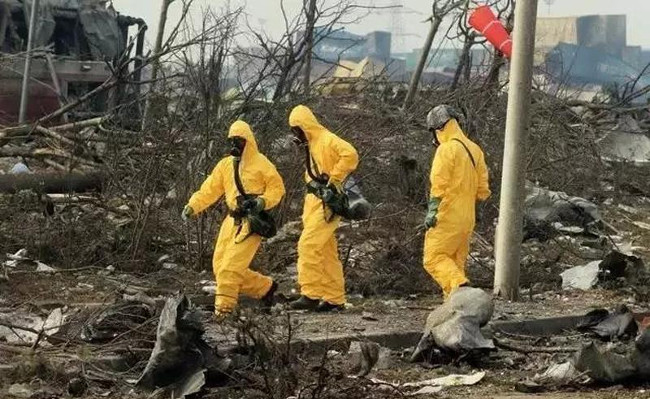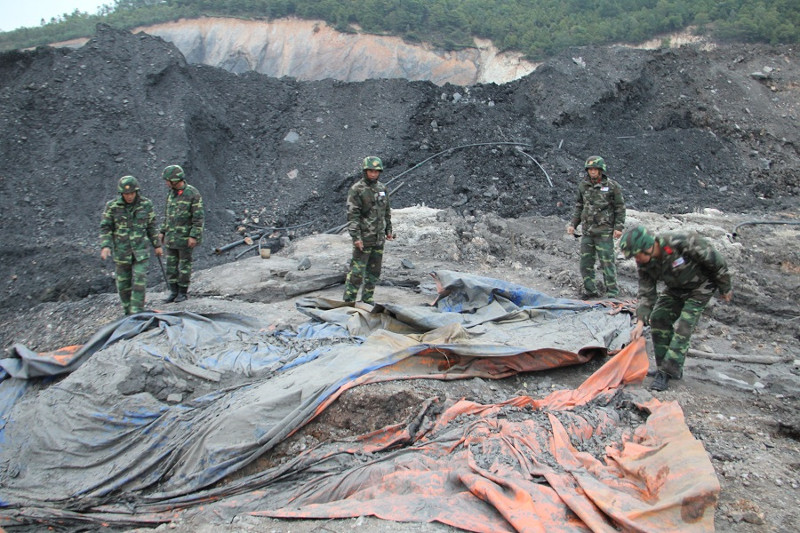5 high paying jobs that still few people accept
The career you choose is now saturated with too much competitive pressure and little income. If so, are you interested in changing to another job that is not only paid 2-3 times higher than normal but still lacks serious manpower?
Some jobs do not even require a college diploma, just a bit of ingenuity and willingness not afraid of arduous danger is a pear! You have been received. Try browsing through the list of 5 surprisingly high-paying jobs below to see if you are brave enough to pursue them:
1. Clean up the crime scene

The total annual income of a crime scene cleanup worker can be up to 6 numbers.
In cities with high crime rates, the total annual income of a crime scene cleanup officer can be up to 6 numbers. Their main job was to put on the antitrust clothes and clean up the murder scene or stone drug clinics.
To do this job you need to be extremely tolerant , either by scrubbing blood on the wall or picking up pieces of human flesh scattered on the carpet (after investigators have moved larger bodies). Become your daily job. In addition, when demolishing illegal drug control rooms, you will also face more harmful or dangerous chemicals, including anthrax bacteria.
2. Managing mines

The average salary of a mine manager falls to about $ 160,000.
The average salary of a mine manager falls to about $ 160,000, according to a PayScale survey. However, to receive this attractive salary, they also have to trade with their health, even their lives. Working at a coal mine, you will have to anticipate the risk of inhaling toxic dust, gas choking, explosive gas leaks and, of course, not eliminating the possibility of a collapsed mine.
The number of 30 employees who die every year in the United States due to mining accidents proves that this is not an easy job at all. In less developed countries, workers often suffer from black lung disease and rare respiratory diseases, due to working in extremely bad conditions and the lack of protective equipment needed. set.
3. Mobile toilet rental

Mobile toilet leasing work brings Eliza Kendall from 100,000 to 120,000 USD per year.
Mobile toilet rental work brings Eliza Kendall from 100,000 to 120,000 USD per year, an income level enviable even for companies operating in the same field. The key to success comes from the idea of upgrading conventional toilet cubicles to become more comfortable with light sensors and automatic deodorant sprays.
These toilets are often rented for use at luxurious parties and weddings, offering a great alternative to the old mobile toilets. However, no matter how flashy the appearance is, you still have to work with the stuffy toilets with stored waste and have no place to discharge immediately after quite a few people have used it, It's different from cheaper devices.
4. Foot specialist

A skilled foot specialist is paid about $ 175,000 / year.
A skilled foot specialist is paid about $ 175,000 / year. However, if the sight of pusting toes makes you shudder, this is definitely not a career for you. Unlike nail salon workers, people working with feet are carefully cared for at the salon, daily foot specialists have to deal with cases of interstitial inflammation, ulcers or ingrown toenails.
Another major obstacle is the high cost of studying this industry, with student lending rates much higher than other medical disciplines.
5. Catching crabs in Alaska

Working conditions in the Arctic Ocean are extremely harsh.
In just 8 weeks, a fisherman can earn up to $ 50,000 in money thanks to the capture of Alaska king crab. But before you consider pursuing this very lucrative job, you need to understand its level of danger.
According to the program The Deadliest Catch, the working conditions in the Arctic Ocean , where these crabs live, are extremely harsh. Working time lasts 20 hours / day at year-round temperatures below 0 degrees Celsius and intense sea waves can push people to the extreme limits of suffering.
Many people have died within a year due to exhaustion or accident falling off the side of the ship. The risk of breaking a leg, hand or a person caught in a rope and being thrown off a slippery deck is very high, especially at the time of the winter with the waves of experienced fishermen also terrified.
- Proceedings of 'high-paying jobs' in the future
- Unhappiness - the path to happiness
- The most terrible jobs ever appeared in the world
- The truth now you know about the statue of Steve Jobs
- 800 million people will soon lose their jobs because of robots
- Received by both Amazon and Microsoft, where should equal wages be?
- Steve Jobs anticipated Apple's decline more than 20 years ago
- 4 oddly paradoxical jobs can help your mood better
- Steve Jobs - marketing 'king'
- For where people quit?
- High school will live long
- What are people spending their time on?
 'Fine laughs' - Scary and painful torture in ancient times
'Fine laughs' - Scary and painful torture in ancient times The sequence of numbers 142857 of the Egyptian pyramids is known as the strangest number in the world - Why?
The sequence of numbers 142857 of the Egyptian pyramids is known as the strangest number in the world - Why? History of the iron
History of the iron What is alum?
What is alum?